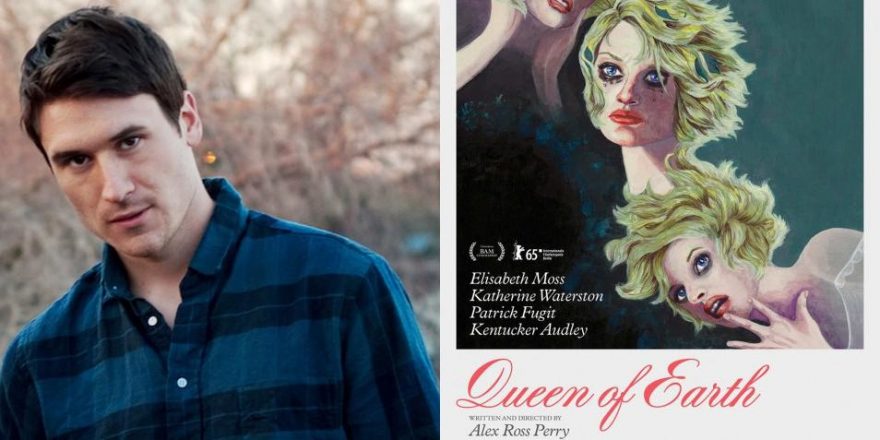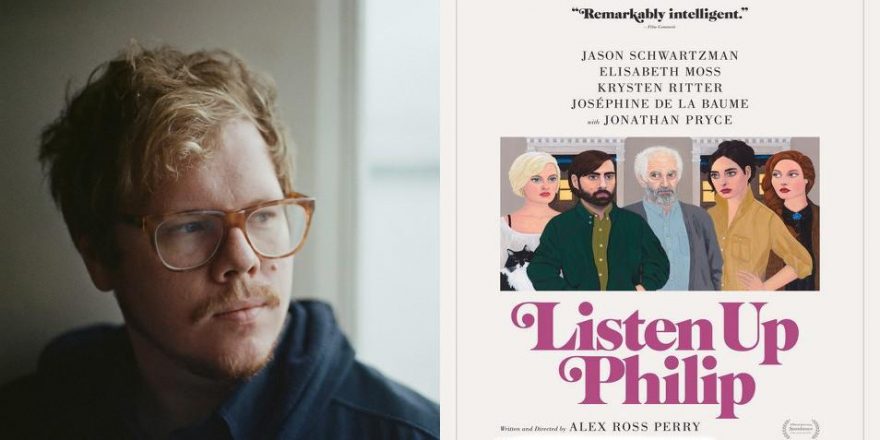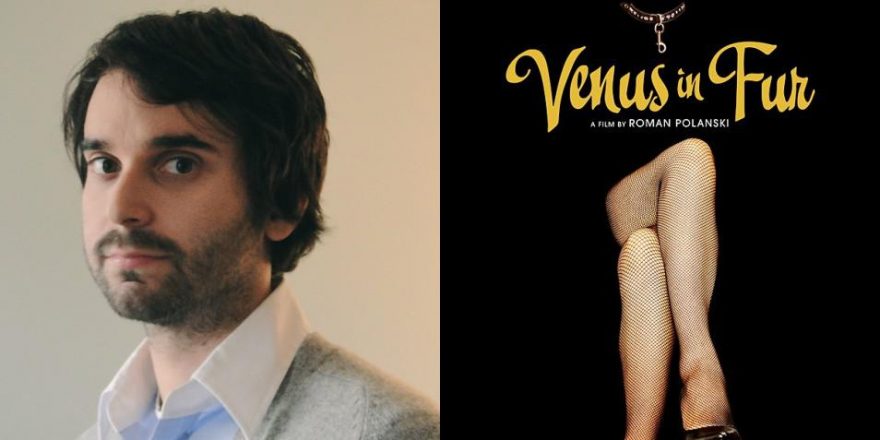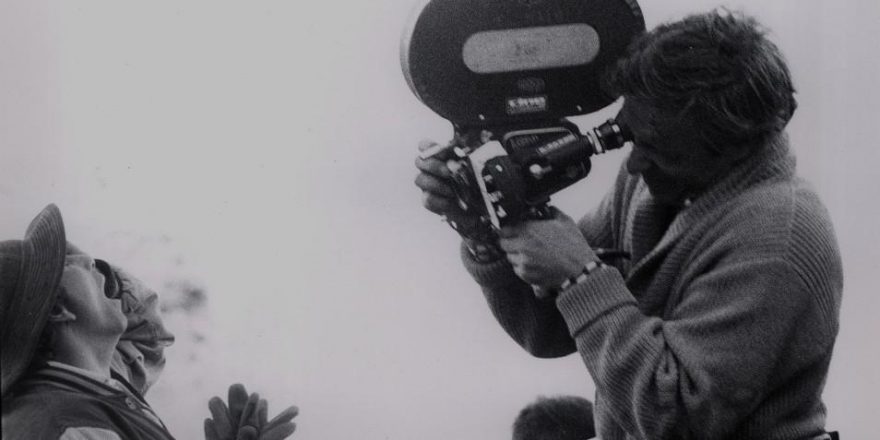As I was exiting a screening of Listen Up Philip at the TIFF Bell Lightbox last October, the main thing going through my head was that I was really excited to see Queen of Earth. Don’t get me wrong, I was thoroughly impressed with Listen Up Philip as a whole, but my favorite part of that film was Elisabeth Moss. I suppose I saw Philip fairly late in the game when it opened in Toronto. By that time the news had broken about Perry’s new film, and a few details had already emerged, mainly that it starred Moss and that it would be very Polanskian in nature. It sounded great, and I had a feeling it’d be up my alley.
I sat down to watch Queen of Earth with high expectations, and by the first shot I was already sold. The film opens with a close-up of its protagonist, Catherine (played by Moss). Her makeup is smeared, her nose is running and her face is full of tears. Off-screen we hear her boyfriend, James (Kentucker Audley), explain that he is leaving her for another woman. He speaks slowly and rationally, in stark contrast to her erratic speech. The camera stays on her as she desperately attempts to castigate him. Catherine’s father has recently passed away, and she can’t understand how James can break up with her while she is in such a fragile state. James remains calm and somewhat detached, speaking honestly and patiently about why their relationship is over.
The opening sequence immediately establishes Queen of Earth as being part of a cinematic tradition that I love; there is something about films that chronicle the downfall of a female heroine that hits the apex of what I want from cinema. Though I’d previously seen François Ozon’s Under the Sand and Michael Haneke’s The Piano Teacher (when, at age 15 or 16, I worked at the now defunct Re:vue Video in the east end of Toronto, skipping class and trying to consume as many films as possible), it was Breaking the Waves and von Trier that really helped crystallize my feelings about this type of movie. When I was in film school I loved von Trier’s Golden Heart trilogy (consisting of Breaking the Waves, Dancer in the Dark and Dogville). I read all I could find about the director and soon discovered that Dreyer’s The Passion of Joan of Arc was von Trier’s favorite film. Apparently when he was a teenager working at the Danish Film Institute, he would spend all of his coffee breaks watching The Passion of Joan of Arc on repeat. While I never watched the film as obsessively as that, it soon became a favorite of mine, along with a string of other films from a similar mold: Godard’s Vivre sa vie, Pialat’s À nos amours and Cassavetes’ A Woman Under the Influence.
The aforementioned films also led me to my first breakthrough as filmmaker, Princess Margaret Blvd. Although it was only a short, it found a small audience and allowed me to attend TIFF and the Berlinale back in 2008. It follows a woman who slowly discovers that she is suffering from early onset Alzheimer’s symptoms. The major scene in the film consists of a close-up of her face as she fails the Montreal Cognitive Assessment test. She becomes increasingly agitated by the diagnostic process as her doctor, who is off camera, calmly walks her through the procedure. For me, the key to making this film was how much I related to the protagonist. She was basically a disguised version of me; I was channeling my memories of going through a series of tests when I was depressed and flunking out of high school. In some interviews, von Trier has mentioned that he relates most to the heroines of his Golden Heart trilogy. Also, in Cassavetes on Cassavetes, it’s revealed that Mabel Longhetti, Gena Rowlands’ protagonist in A Woman Under the Influence, was basically a version of the director. So I wasn’t surprised to read in a recent interview with Alex Ross Perry that he relates more to Moss’ Catherine in Queen of Earth than Jason Schwartzman’s Philip in Listen Up Philip. (It’s also worth pointing out that Perry cites many influences, including Robert Altman’s Images, Fassbinder’s The Bitter Tears of Petra von Kant and Woody Allen’s Interiors, but not a single film that I’ve mentioned.)
Amazing results seem to happen when filmmakers empathize with their female leads. When you watch the opening of Queen of Earth, it’s hard not to think of The Passion of Joan of Arc and that Moss’ Catherine, like Maria Falconetti’s Joan, is on trial. Some might think it an odd instinct for the director to empathize with the character that is falling apart on screen. You might assume that they’d be more inclined to side with the person off screen – in this case James, the boyfriend who’s dumping Moss’ character. At the same time, it’s hard to know who to side with at all. Moss’ performance is incredible; Catherine is clearly hurt and in shock, but she’s also belligerent and talks loudly over James. We witness the rug being pulled out from under her feet – and it’s pulled out from under ours as well. We don’t know what to make of what’s going on. We want to side with Catherine, but it’s hard to know who is at fault. Is it worse to dump someone who is in crisis or to have the audacity to tell someone they can’t leave you because your father just died? This question results in a moment of brutal honesty; most films would slowly build to such an exchange, yet this is how Queen of Earth starts. However, plot and action don’t define this story as much as characters and their behavior do. The most important events for these characters only really happen internally. As much as it may seem that Catherine will be defined by this double slap of being dumped while in mourning, she isn’t.
As Queen of Earth progresses, Catherine grows increasingly desperate, eventually falling into a downward spiral. The film remains mysterious throughout, and we never really know where it’s headed. Catherine is always lost and unpredictable. Watching Moss’ performance remains invigorating throughout. We watch as Catherine constantly renegotiates her relationships; while she is often competitive and mean-spirited, she’s occasionally empathetic too. In many ways, the film is a portrait of a woman’s descent into madness, yet it doesn’t feel as though we are judging her. We remain uncertain, and this uncertainty brings openness to the film. While Catherine’s behavior is absurd, it’s also humanizing.
In crafting a film like this, Perry has tapped into something uniquely powerful. I’d be thrilled if he were to continue down this path and make a Golden Heart trilogy of his own. If Moss continues to deliver performances such as this, we’ll surely one day consider her as great an actress as Rowlands or Falconetti.








